Exploring Midcentury Architecture: Timeless Design Ideas

Are you dreaming of a home that blends sleek simplicity with timeless elegance, but unsure where to start? Midcentury architecture, with its clean lines, open spaces, and connection to nature, might be the answer you’re seeking. This iconic design movement, born in the mid-20th century, continues to captivate homeowners and designers alike for its versatility and enduring appeal. In this comprehensive guide, we’ll explore the essence of midcentury architecture, uncover its defining features, and share practical ideas to bring this style into your home whether you’re renovating or simply seeking inspiration.
From its historical roots to actionable design tips, this article will help you understand why midcentury architecture remains a favorite and how you can incorporate its principles into your space. Let’s dive into the world of open floor plans, bold geometries, and natural materials that define this beloved style.
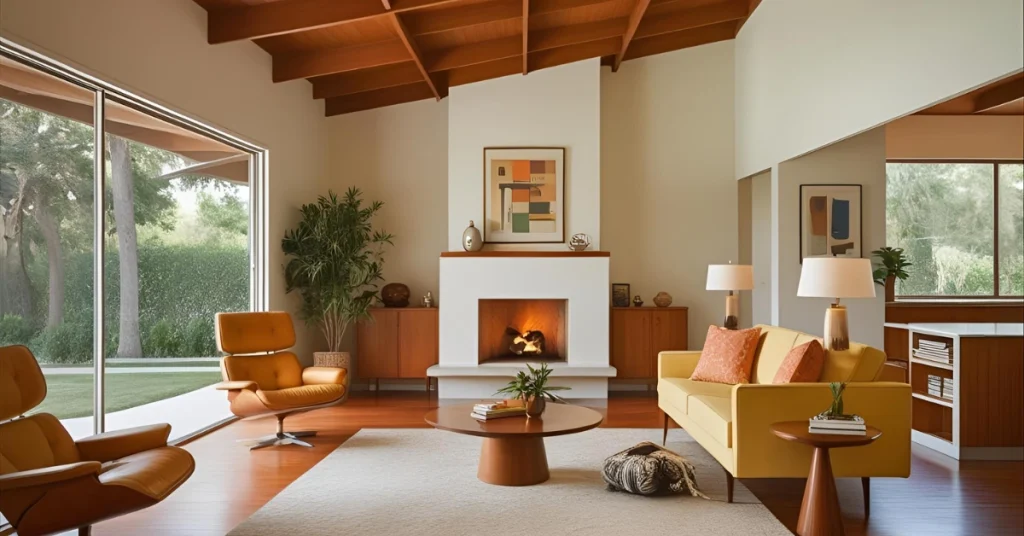
What Is Midcentury Architecture?
Midcentury architecture emerged in the United States between the 1940s and 1960s, a period of optimism and innovation following World War II. This design movement, often associated with the broader midcentury modern style, prioritized functionality, simplicity, and a harmonious connection with the environment. Architects like Frank Lloyd Wright, Richard Neutra, and Eero Saarinen pioneered this approach, creating homes that felt both futuristic and grounded in their surroundings.
According to the National Trust for Historic Preservation, midcentury architecture reflects a cultural shift toward suburban living and a desire for affordable, practical homes that didn’t sacrifice beauty. Its influence extends beyond residential spaces to commercial buildings, furniture, and even urban planning. Today, this style remains relevant for its adaptability to modern lifestyles and its emphasis on sustainable design principles.
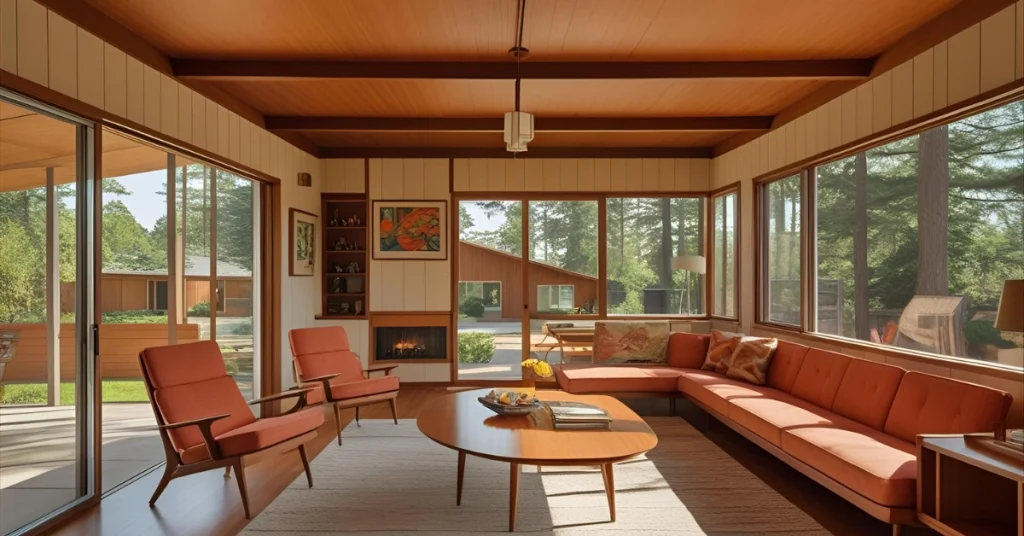
Key Characteristics of Midcentury Architecture
To truly appreciate midcentury architecture, it’s essential to understand its defining elements. Here are the hallmarks that set this style apart:
- Clean Lines and Minimal Ornamentation: Midcentury homes favor simplicity, with smooth surfaces and geometric shapes that avoid excessive decoration.
- Open Floor Plans: Spaces flow seamlessly, creating airy interiors that prioritize flexibility and natural light.
- Integration with Nature: Large windows, sliding glass doors, and outdoor living areas blur the line between indoors and outdoors.
- Functional Design: Every element serves a purpose, from built-in furniture to multi-use spaces.
- Bold Use of Materials: Wood, glass, steel, and concrete are combined in innovative ways, often left in their natural state.
- Flat or Low-Pitched Roofs: These roofs create a streamlined silhouette, often with wide overhangs for shade.
As interior designer Sarah Johnson notes, “Midcentury architecture is about creating spaces that feel effortless yet intentional. It’s a balance of form and function that resonates with how we live today.”
The History and Evolution of Midcentury Architecture
The roots of midcentury architecture lie in the Bauhaus movement of the 1920s and 1930s, which emphasized functional design and industrial materials. When European architects like Walter Gropius and Ludwig Mies van der Rohe migrated to the U.S., they brought these ideas, blending them with American optimism and post-war prosperity. The result was a design revolution that prioritized accessibility and innovation.
One notable example is the Case Study House Program (1945–1966), sponsored by Arts & Architecture magazine. This initiative challenged architects to create affordable, replicable homes using modern materials. Iconic designs, like the Eames House by Charles and Ray Eames, showcased how midcentury architecture could be both practical and beautiful.
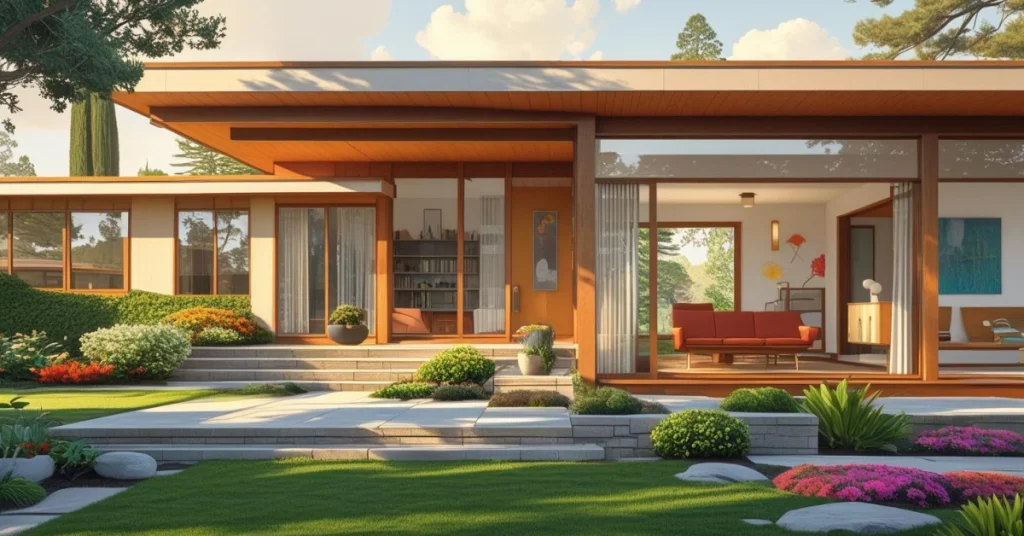
Over time, midcentury architecture evolved to include regional variations. In California, for instance, homes embraced indoor-outdoor living to suit the climate, while in colder regions, designs focused on energy efficiency. Today, this style continues to inspire architects and homeowners seeking timeless, sustainable solutions.
Why Midcentury Architecture Remains Timeless
What makes midcentury architecture so enduring? Its appeal lies in its ability to adapt to modern needs while retaining a sense of nostalgia. Here are a few reasons why this style continues to thrive:
- Versatility: Midcentury design complements a range of aesthetics, from minimalist to eclectic.
- Sustainability: The emphasis on natural light and materials aligns with eco-conscious living.
- Human-Centered Design: Open layouts and functional spaces cater to how people live, work, and socialize.
- Cultural Resonance: Midcentury architecture evokes a sense of optimism and creativity, resonating with today’s desire for meaningful, authentic design.
A 2023 survey by the American Institute of Architects found that 68% of homeowners renovating older homes sought to preserve or incorporate midcentury elements, highlighting the style’s ongoing popularity.
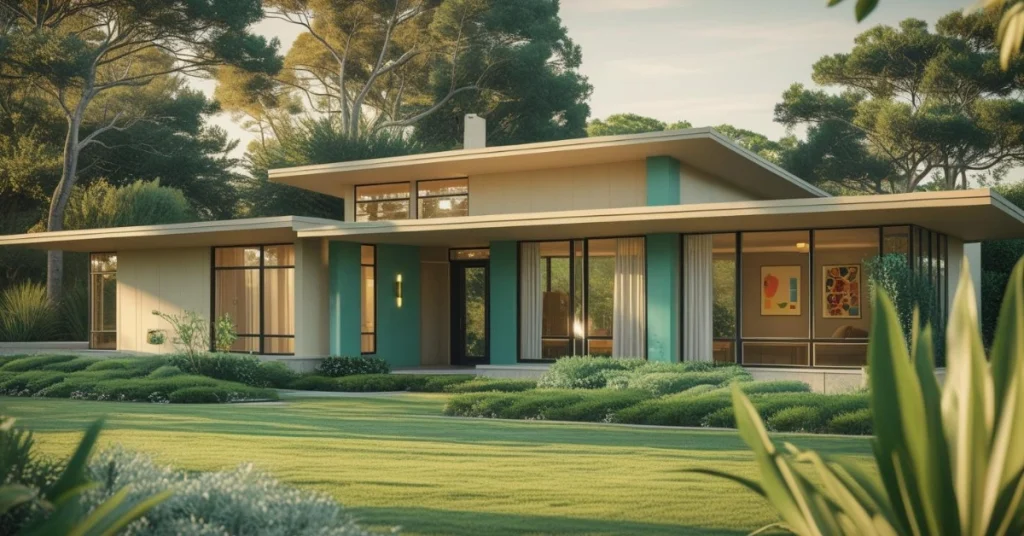
Iconic Examples of Midcentury Architecture
To inspire your design journey, let’s explore some iconic midcentury homes that exemplify the style’s principles:
1. The Eames House (Case Study House #8)
Located in Pacific Palisades, California, this 1949 masterpiece by Charles and Ray Eames uses prefabricated steel and glass to create a modular, colorful home. Its open layout and vibrant interiors remain a benchmark for midcentury design.
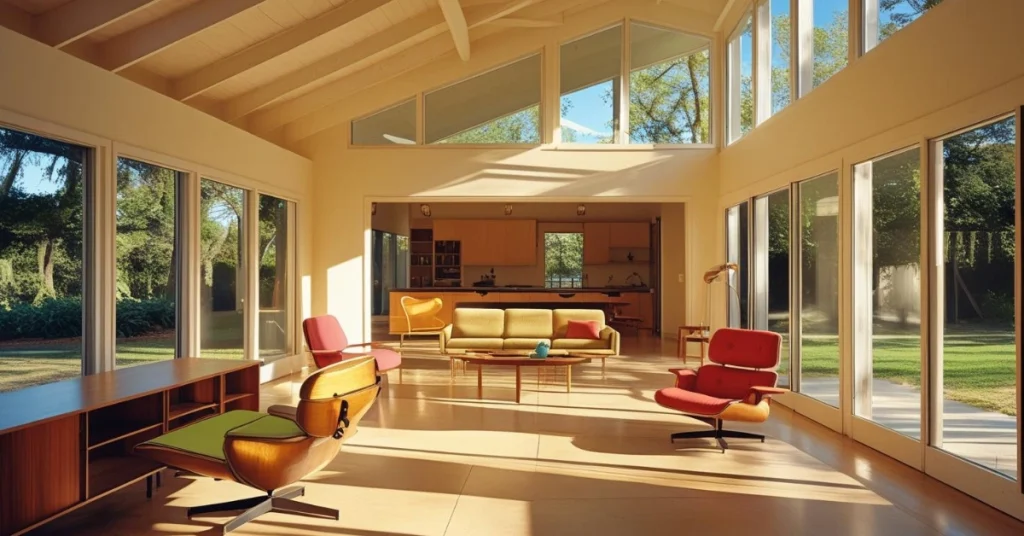
2. The Stahl House (Case Study House #22)
Designed by Pierre Koenig in 1959, this Los Angeles home is famous for its cantilevered structure and floor-to-ceiling glass walls. Its breathtaking views and minimalist aesthetic make it a midcentury icon.

3. The Farnsworth House
Ludwig Mies van der Rohe’s 1951 design in Illinois is a study in minimalism, with a glass-walled structure that blends seamlessly with its natural surroundings. It embodies the “less is more” philosophy.
These homes demonstrate how midcentury architecture balances innovation with beauty, offering inspiration for your own projects.

How to Incorporate Midcentury Architecture into Your Home
Ready to bring midcentury architecture into your space? Whether you’re renovating an existing home or designing from scratch, these practical tips will help you capture the style’s essence.
1. Embrace Open Floor Plans
Midcentury homes prioritize flow and flexibility. Remove non-structural walls to create a spacious living area that connects the kitchen, dining, and living spaces. Use furniture to define zones, such as a low-profile sofa or a statement rug.
Tip: If removing walls isn’t an option, consider sliding doors or large pass-throughs to mimic the open feel.

2. Maximize Natural Light
Large windows and sliding glass doors are midcentury staples. Install floor-to-ceiling windows or skylights to flood your space with light. For privacy, use sheer curtains or wooden slats that maintain the aesthetic.
Designer Insight: “Windows are the soul of midcentury architecture,” says designer Emily Carter. “They frame the outdoors like a piece of art.”
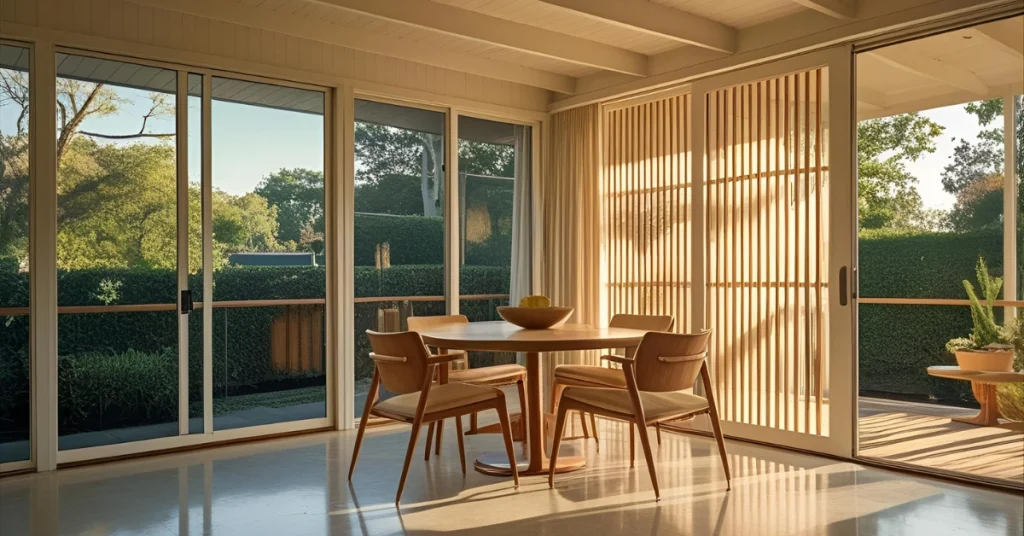
3. Choose Authentic Materials
Incorporate natural materials like wood (teak, walnut, or oak), stone, and glass. Expose wooden beams or use concrete accents for an authentic midcentury feel. Avoid overly polished finishes let materials shine in their natural state.
Example: In my own home, I replaced carpet with polished concrete floors, which added texture and a modern edge while staying true to midcentury roots.
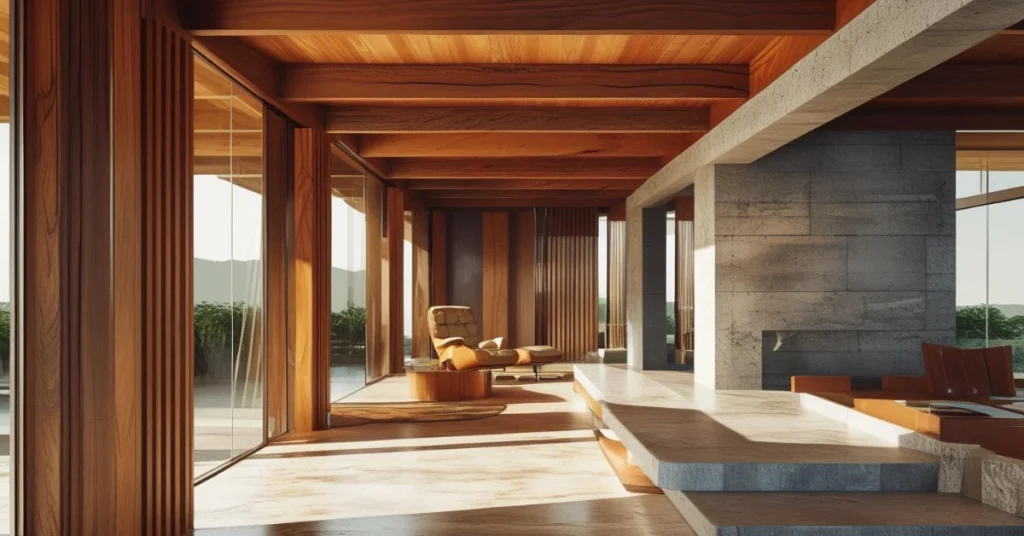
4. Focus on Functional Furniture
Midcentury furniture, like Eames chairs or Noguchi tables, doubles as art. Choose pieces with clean lines and organic shapes. Built-in shelving or benches can enhance functionality without cluttering the space.
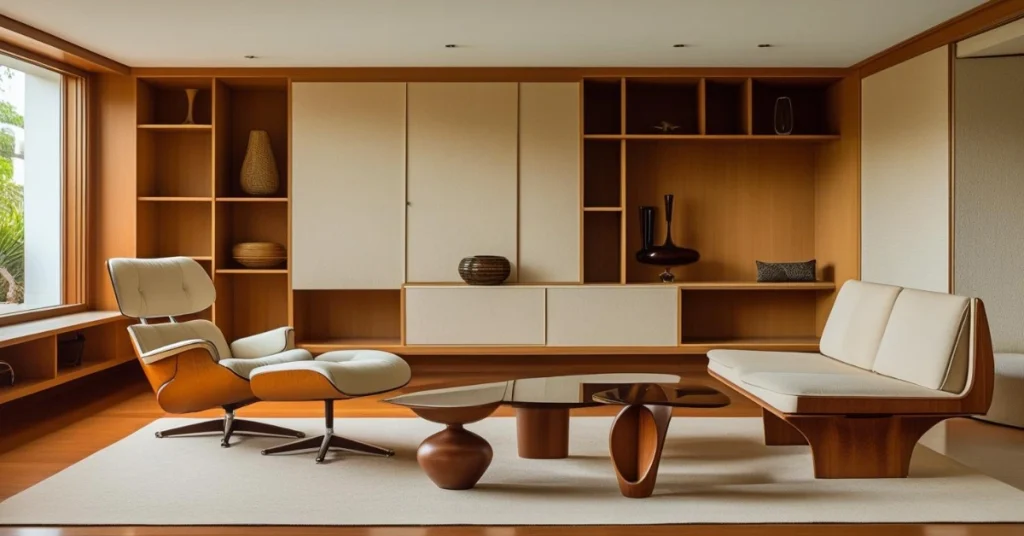
5. Create Indoor-Outdoor Connections
Design a patio or deck that extends your living space outdoors. Use sliding glass doors or bi-fold windows to create a seamless transition. Add midcentury-inspired outdoor furniture, like rattan chairs or a fire pit, for a cohesive look.
Tip: Plant native greenery around your home to enhance the connection to nature, a core midcentury principle.

6. Play with Geometric Patterns
Incorporate bold, geometric patterns in wallpaper, rugs, or textiles. Think hexagons, circles, or abstract shapes in muted or vibrant tones. These add visual interest without overwhelming the minimalist aesthetic.
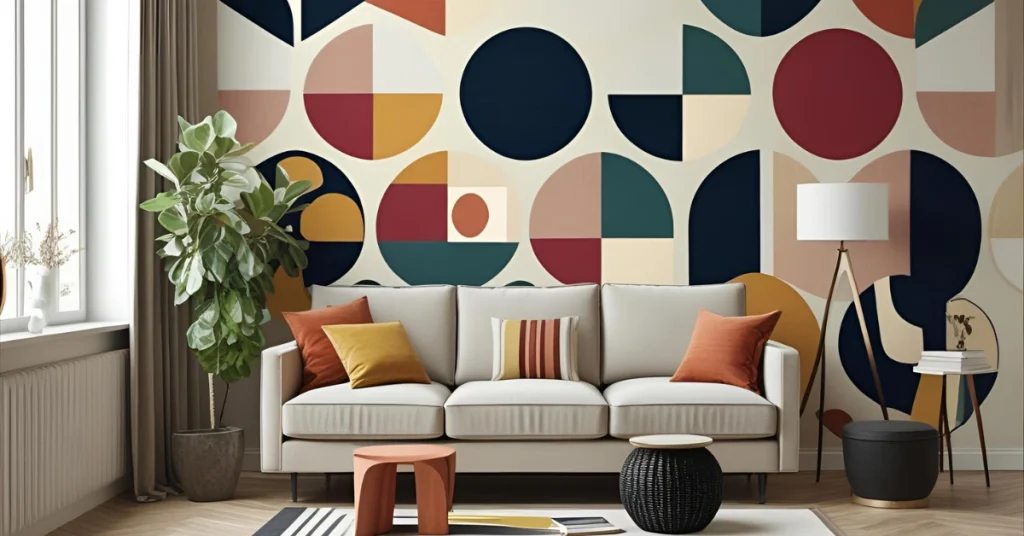
7. Use a Neutral Color Palette with Pops of Color
Midcentury architecture favors neutral tones like white, beige, or gray, accented with bold hues like mustard yellow, teal, or orange. Use these colors in furniture, artwork, or accent walls to create focal points.

Table: Midcentury Color Palette Ideas
| Base Color | Accent Color | Where to Use |
|---|---|---|
| White | Mustard Yellow | Throw pillows, artwork |
| Gray | Teal | Upholstery, curtains |
| Beige | Burnt Orange | Accent wall, rugs |
8. Incorporate Statement Lighting
Midcentury lighting, like Sputnik chandeliers or Arco floor lamps, adds drama and functionality. Place a statement piece in your living room or dining area to elevate the space.
Real-World Example: A friend recently added a replica Nelson Bubble Lamp to her dining room, transforming it into a midcentury-inspired haven without major renovations.

Common Mistakes to Avoid in Midcentury Design
While midcentury architecture is versatile, it’s easy to stray from its core principles. Here are pitfalls to avoid:
- Overloading with Decor: Resist the urge to clutter spaces. Stick to a few statement pieces to maintain the minimalist aesthetic.
- Ignoring Proportions: Oversized furniture can overwhelm a midcentury space. Choose pieces that complement the room’s scale.
- Neglecting Outdoor Spaces: Midcentury homes thrive on indoor-outdoor flow. Don’t overlook patios or gardens.
- Using Inauthentic Materials: Avoid cheap imitations of wood or stone. Invest in quality materials for authenticity.
Midcentury Architecture in Modern Contexts
Today, midcentury architecture is experiencing a revival, with homeowners and architects reinterpreting its principles for contemporary living. For example, new builds in cities like Austin and Portland often incorporate midcentury elements like flat roofs and open layouts while meeting modern energy standards. Retrofitting older midcentury homes with sustainable features, such as solar panels or double-glazed windows, is also gaining traction.
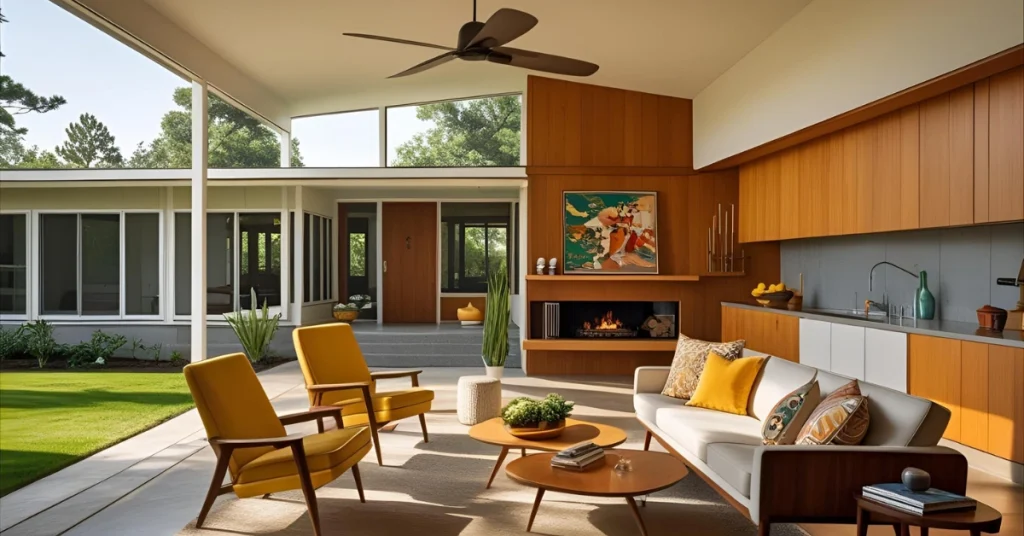
A 2024 report by the U.S. Green Building Council notes that midcentury-inspired designs are among the most energy-efficient due to their emphasis on natural light and ventilation. This makes them ideal for eco-conscious homeowners looking to reduce their carbon footprint.
How to Source Midcentury-Inspired Materials and Furniture
Finding authentic or high-quality midcentury-inspired pieces can be challenging. Here are some tips:
- Visit Vintage Shops: Look for local antique stores or flea markets specializing in midcentury furniture.
- Shop Online Marketplaces: Platforms like 1stDibs or Chairish offer curated selections of authentic midcentury pieces.
- Choose Reputable Retailers: Brands like West Elm and Design Within Reach offer modern takes on midcentury classics.
- Work with Artisans: For custom pieces, collaborate with local craftsmen to create built-ins or furniture that match the aesthetic.
Tip: Always check the condition of vintage pieces to ensure they’re structurally sound before purchasing.

Midcentury Architecture Around the World
While midcentury architecture is often associated with the U.S., its influence is global. In Australia, the “Sydney School” adapted midcentury principles to local climates, using brick and timber for durability. In Brazil, architects like Oscar Niemeyer blended midcentury minimalism with bold, sculptural forms. Exploring these global variations can inspire unique takes on the style for your home.
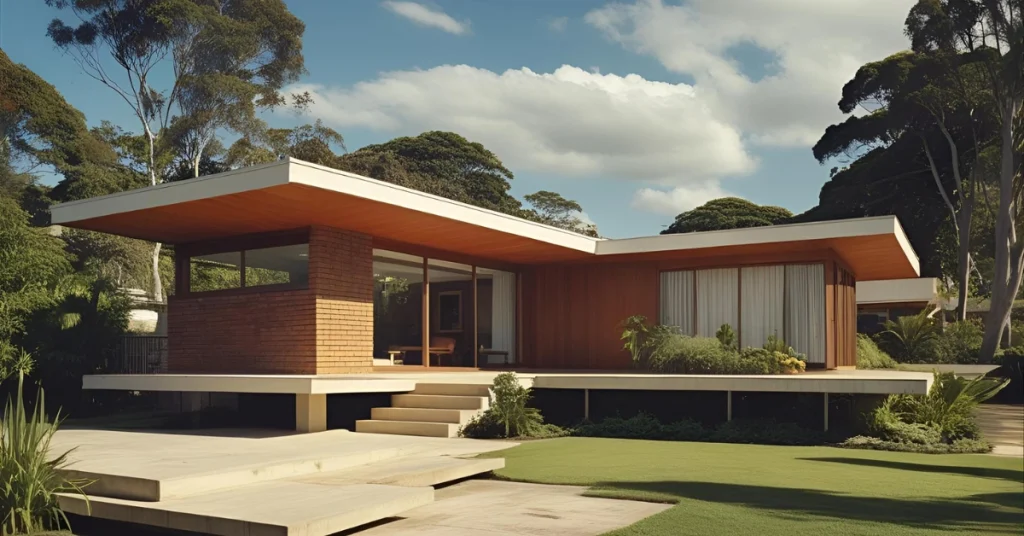
Conclusion: Bringing Midcentury Architecture to Life
Midcentury architecture offers a timeless blueprint for creating homes that are functional, beautiful, and connected to their surroundings. By embracing its principles open spaces, natural materials, and minimalist design you can craft a living space that feels both nostalgic and forward-thinking. Whether you’re drawn to the clean lines of an Eames chair or the airy feel of a glass-walled living room, midcentury architecture provides endless inspiration for modern living.
Ready to transform your home with midcentury architecture? Start by assessing your space and incorporating one or two elements, like a statement light fixture or an open floor plan. For personalized guidance, consult a local architect or interior designer who specializes in midcentury design. Share your midcentury-inspired projects in the comments below we’d love to hear how you’re bringing this iconic style to life!






